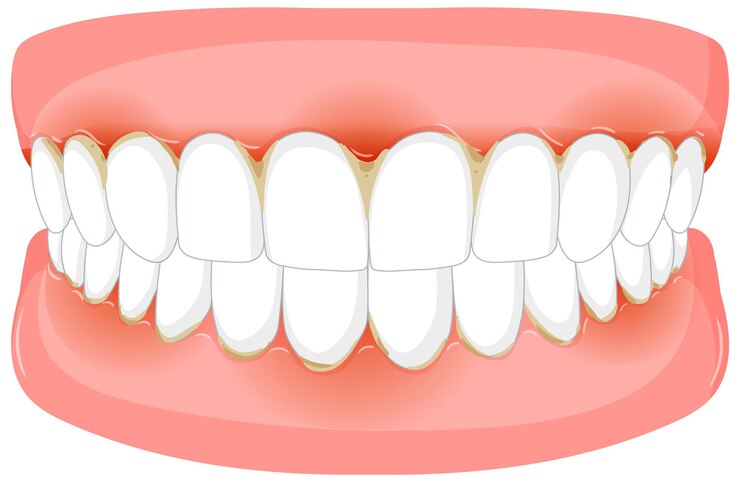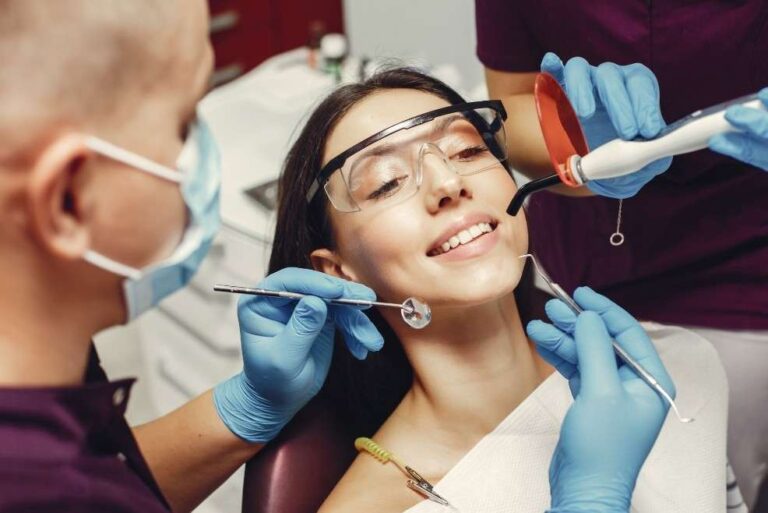Permanent Teeth Guide Understanding Eruption and Care
Adult teeth begin to emerge after a child’s milk teeth fall out, which happens between the age 6 and 12. The natural loss of milk teeth usually accompanies the development of these permanent teeth. A child’s jaws expand to accommodate the larger and greater number of permanent teeth.
Baby Teeth vs. Permanent Tooth Eruption in Children
Children develop a set of primary, or “baby,” teeth, starting with the eruption of their first tooth at around six months. Baby teeth help children chew, develop good nutrition, and form speech patterns. They also create space for the permanent teeth that emerge through the gums after the primary teeth fall out naturally.
Typically, about four primary teeth erupt every six months. Lower teeth usually appear before the upper ones, and tooth eruption occurs earlier in girls than boys.
Teeth often erupt in pairs, one on each side of the jaw. For example, one tooth may appear on the right and a similar one on the left. When a child is between two and three years old generally have 20 baby teeth—10 on the upper jaw and 10 on the lower jaw.
In Terms Of Appearance And Numbers
The first milk teeth appear between four to six months of age. They typically form a complete set of 20 teeth by the age of 3 years.
The 20 milk teeth include:
- Four central incisors, or front teeth, are used for cutting and biting (two in each jaw)
- Four lateral incisors (two in each jaw)
- Four canines or cuspids aid in tearing (two in each jaw)
- Four first molars, or back teeth, are used for grinding and chewing (two in each jaw)
- Four second molars (two in each jaw)
Adult teeth that replace milk teeth start to appear between the ages of 6 and 8. A complete set is usually formed by the age of 18 to 20.
The adult set includes 32 teeth:
- Four central incisors, or front teeth (two in each jaw)
- Four lateral incisors, or side front teeth (two in each jaw)
- Four canines (two in each jaw)
- Eight premolars (four in each jaw)
- Four first molars, or back teeth (two in each jaw)
- Four-second molars, or back teeth (two in each jaw)
- Four-third molars, also known as wisdom teeth (two in each jaw)
Most children have 28 permanent teeth developed by the age of 13. This includes four central incisors, four lateral incisors, eight premolars, four canines, and eight molars. The final permanent teeth are the third molars, or wisdom teeth, which typically begin to appear between the ages of 17 and 21.
The Process of Managing Teething
The immune system of infants begins to change when they reach approximately six months old. Along with the habit of putting objects into their mouths, this increases their risk of illnesses. Common childhood ailments, such as changes in sleep quality, eating habits, rashes, irritation, drooling, runny nose, and diarrhoea, are frequently associated with teething.
Teething symptoms typically last about 48 hours. Suppose your child experiences the symptoms mentioned above for a longer period. In that case, it is essential to consult your child’s healthcare provider to rule out other potential causes, such as viral or bacterial infections and middle ear inflammations.
Occasionally, you may notice a blue-grey or purple bubble on the gums, which indicates that a tooth is about to emerge. This is known as an eruption cyst. It usually disappears once the tooth erupts. Providing your child with additional care and support is crucial to help them feel comfortable.
Here are a few tips to manage teething:
- Gently massage the gums using clean fingers or a soft, moist cloth.
- Offer ice-cold (not frozen) dental rusks or teething rings. The pressure from a cold object can help ease teething discomfort. Avoid sterilizing plastic teething rings in hot water or a dishwasher unless specifically instructed by the manufacturer. Always verify product details before purchasing teething rings and avoid those containing an artificial softener called “diisononyl phthalate.”
- Use sugar-free teething biscuits for infants older than six months who have started eating solids.
- Consider pain-relieving medications. Paracetamol is a suitable option for infants, and ibuprofen may also help, though it is less commonly used for young children.
- Keep the skin dry. Drooling may irritate facial skin, especially around the chin. Gently wipe it with a soft cloth throughout the day.
Treatments to Avoid
Certain treatments are not recommended for teething, including:
- Amber teething necklaces: These are believed to release healing oils when in contact with warm skin, which supposedly alleviates pain. However, these necklaces are often misused for chewing, leading to potential choking and strangulation hazards. Safer alternatives should be considered for relieving teething discomfort.
- Teething gels: Common teething gels contain 8.7-9.0% choline salicylate, a compound related to aspirin. Aspirin is not recommended for children under 16 years old due to its association with Reye’s syndrome, a rare but potentially fatal condition affecting the brain and liver.
- Additionally, teething gels often include numbing agents such as lignocaine or benzocaine, which can be difficult to dose accurately and may lead to toxic effects. These risks outweigh the potential benefits, especially when safer alternatives are available.
Research indicates that teething gels do not effectively alleviate pain caused by teething. Instead, the pressure applied while rubbing the gel into the gums provides relief.
Tooth Decay in Babies
Dental decay can be prevented. The likelihood of developing tooth decay can be significantly reduced by practicing proper dental hygiene and consuming a nutritious diet at a young age.
A dental professional should treat damaged baby teeth. Specialized treatment in a hospital under general anesthesia may sometimes be required. If left untreated, decayed baby teeth can lead to dental abscesses, mouth pain (swelling or boils caused by dental infections), and problems with the surrounding teeth.
Severe decay of baby teeth can interfere with eating and sleeping and may also slow a child’s growth.
If a baby’s molar is lost too early due to severe decay, the surrounding baby teeth may shift into the gap, causing spacing issues for the adult teeth when they emerge.
The Loss of Baby Teeth
Around the age of six, deciduous teeth loosen and eventually fall out to make way for adult teeth. It is normal for children to lose their primary teeth as early as two years younger or as late as six.
Girls tend to lose their teeth earlier than boys. The first tooth to fall out is typically located at the front of the lower jaw.
Losing deciduous teeth can be an uncomfortable and unsettling experience for young children.
Parents can follow these suggestions to help their children:
- Reassure your child that losing baby teeth is a natural process and that new adult teeth will grow to replace them. It is normal for gums to feel tender and bleed slightly, although some children experience little to no discomfort when losing their teeth.
- To ease the discomfort of loose teeth, use cold packs, over-the-counter pain relievers, or anti-inflammatory medications. Consult a dentist or pharmacist for the appropriate medication for your child.
- Introduce the idea of the Tooth Fairy. This long-standing tradition can make the experience more exciting. The thought of receiving money or a small reward for losing a tooth may help ease your child’s worries about the process.
Permanent Teeth
Permanent teeth are also called adult teeth or secondary teeth. They begin to grow in the jaws from birth and continue to develop into the teen years. By age 21, a person typically has 32 permanent teeth—16 in the upper jaw and 16 in the lower jaw. Third molars, commonly known as wisdom teeth, may not develop or grow in many individuals, so some end up with only 28 permanent teeth.
Around the age of six, the first permanent molars start to emerge. These four molars (two in each jaw) grow behind the child’s baby teeth. Other permanent teeth, such as canines, incisors, and premolars, grow into the spaces left by deciduous teeth that have exfoliated (fallen out).
The timing of when permanent teeth appear varies for each child. Generally, the order of their eruption and the approximate age range for each type of permanent tooth are as follows:
- First molars: Between 6 and 7 years old
- Central incisors: Between 6 and 8 years old
- Lateral incisors: Between 7 and 8 years old
- Canine teeth: Between 9 and 13 years old
- Premolars: Between 9 and 13 years old
- Second molars: Between 11 and 13 years old
- Third molars (wisdom teeth): Between 17 and 21 years old, if they develop at all
Mouthguards Safeguard Children’s Teeth
Mouthguards protect teeth and help prevent dental injuries, especially during contact sports. Children who participate in contact sports should wear a specially designed mouthguard. This applies to primary school-aged children, older children, and teenagers.
Custom-fitted mouthguards are more comfortable, allow normal speech, and do not interfere with breathing.
FAQ
How long will your permanent teeth last?
If you take good care of them, your teeth can last a lifetime. Tooth loss is not a normal part of the aging process. However, it is common in older people due to inadequate oral hygiene and a higher risk of oral health problems, such as gum disease and tooth decay.
How much does a set of permanent teeth cost?
Removing and replacing all your teeth with implants can cost between $20,000 and $80,000. This depends on the number of implants used, whether the teeth are fixed or removable, and where the procedure is performed.
What are the four types of permanent teeth?
Did you know you have different types of teeth? Most adults have around 32 permanent teeth, classified into four categories: incisors, canines, premolars, and molars.
Which of your teeth are permanently fixed?
Permanent teeth:
- First molars: Form between 6 and 7 years old.
- Central incisors: Form between 6 and 8 years old.
- Lateral incisors: Form between 7 and 8 years old.
- Canine teeth: Form between 9 and 13 years old.
- Premolars: Form between 9 and 13 years old.
- Second molars: Form between 11 and 13 years old.


